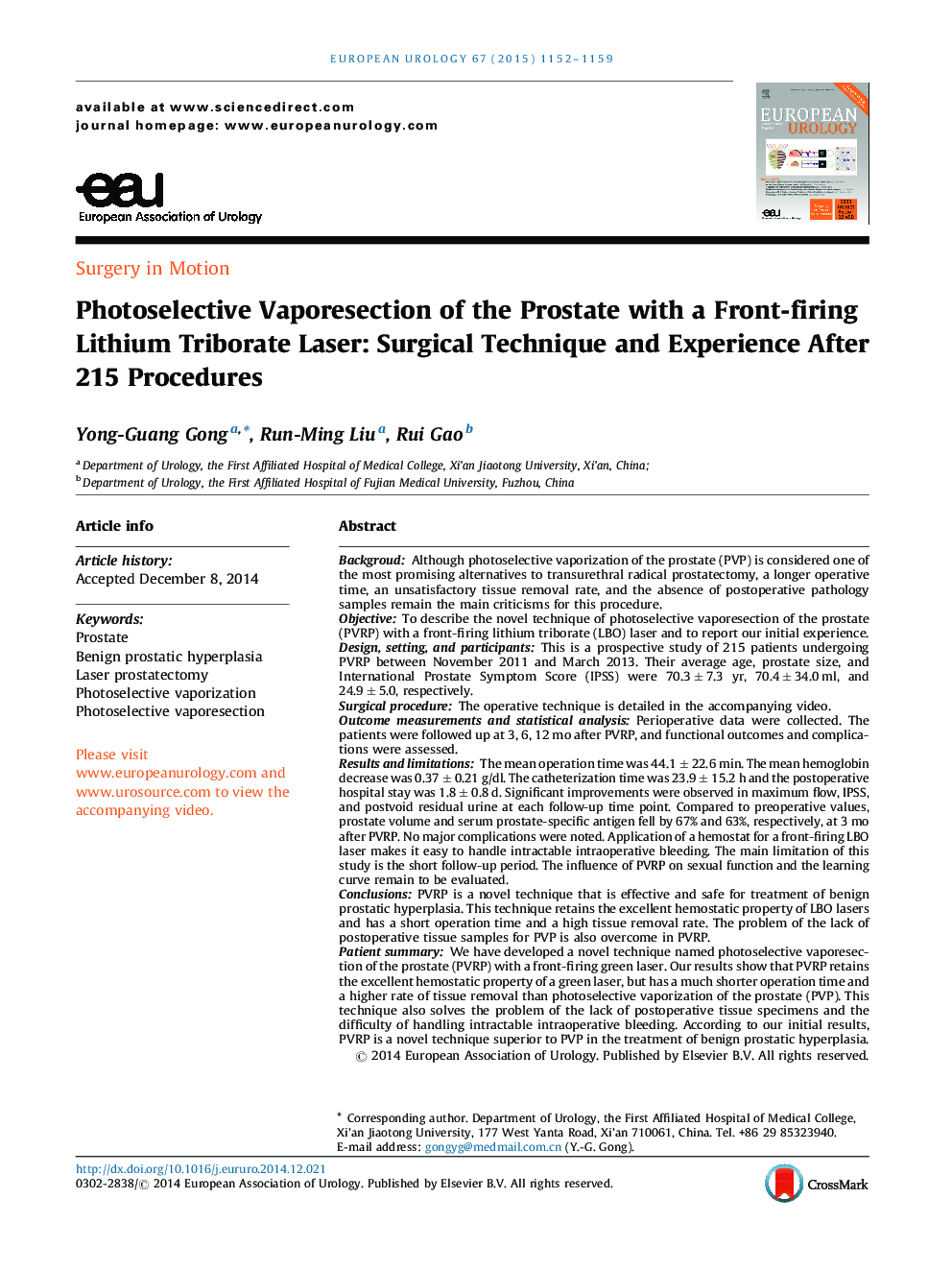| کد مقاله | کد نشریه | سال انتشار | مقاله انگلیسی | نسخه تمام متن |
|---|---|---|---|---|
| 6175187 | 1252955 | 2015 | 8 صفحه PDF | دانلود رایگان |
BackgroudAlthough photoselective vaporization of the prostate (PVP) is considered one of the most promising alternatives to transurethral radical prostatectomy, a longer operative time, an unsatisfactory tissue removal rate, and the absence of postoperative pathology samples remain the main criticisms for this procedure.ObjectiveTo describe the novel technique of photoselective vaporesection of the prostate (PVRP) with a front-firing lithium triborate (LBO) laser and to report our initial experience.Design, setting, and participantsThis is a prospective study of 215 patients undergoing PVRP between November 2011 and March 2013. Their average age, prostate size, and International Prostate Symptom Score (IPSS) were 70.3 ± 7.3 yr, 70.4 ± 34.0 ml, and 24.9 ± 5.0, respectively.Surgical procedureThe operative technique is detailed in the accompanying video.Outcome measurements and statistical analysisPerioperative data were collected. The patients were followed up at 3, 6, 12 mo after PVRP, and functional outcomes and complications were assessed.Results and limitationsThe mean operation time was 44.1 ± 22.6 min. The mean hemoglobin decrease was 0.37 ± 0.21 g/dl. The catheterization time was 23.9 ± 15.2 h and the postoperative hospital stay was 1.8 ± 0.8 d. Significant improvements were observed in maximum flow, IPSS, and postvoid residual urine at each follow-up time point. Compared to preoperative values, prostate volume and serum prostate-specific antigen fell by 67% and 63%, respectively, at 3 mo after PVRP. No major complications were noted. Application of a hemostat for a front-firing LBO laser makes it easy to handle intractable intraoperative bleeding. The main limitation of this study is the short follow-up period. The influence of PVRP on sexual function and the learning curve remain to be evaluated.ConclusionsPVRP is a novel technique that is effective and safe for treatment of benign prostatic hyperplasia. This technique retains the excellent hemostatic property of LBO lasers and has a short operation time and a high tissue removal rate. The problem of the lack of postoperative tissue samples for PVP is also overcome in PVRP.Patient summaryWe have developed a novel technique named photoselective vaporesection of the prostate (PVRP) with a front-firing green laser. Our results show that PVRP retains the excellent hemostatic property of a green laser, but has a much shorter operation time and a higher rate of tissue removal than photoselective vaporization of the prostate (PVP). This technique also solves the problem of the lack of postoperative tissue specimens and the difficulty of handling intractable intraoperative bleeding. According to our initial results, PVRP is a novel technique superior to PVP in the treatment of benign prostatic hyperplasia.
Journal: European Urology - Volume 67, Issue 6, June 2015, Pages 1152-1159
